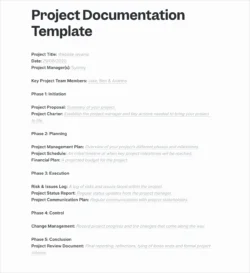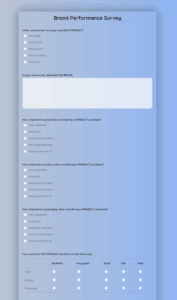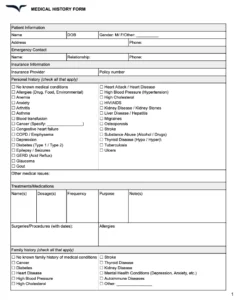Ever felt like you’re running your business blindfolded? Key Performance Indicators, or KPIs, are your eyes, guiding you towards your goals. But simply having KPIs isn’t enough. You need a robust system to document, track, and analyze them. That’s where a KPI documentation form template comes in handy. Think of it as your central hub for all things KPI-related, ensuring everyone’s on the same page and progress is clearly visible. No more guessing games, just data-driven decisions.
Why is documenting your KPIs so important? Well, imagine trying to build a house without a blueprint. You might end up with something functional, but it probably won’t be exactly what you envisioned, and the process will be much more chaotic. A KPI documentation form template provides that blueprint, outlining exactly what you’re measuring, why it matters, and how you’re tracking it. This structured approach allows for better communication, accountability, and ultimately, better results.
In this article, we’ll dive deep into the world of KPI documentation form templates, exploring why they’re essential, what key elements they should include, and how you can tailor them to suit your specific business needs. We’ll also provide some helpful tips and resources to get you started on your journey toward data-driven success. Ready to unlock the power of your KPIs? Let’s get started.
The Importance of a Well-Defined KPI Documentation Form Template
A well-defined KPI documentation form template isn’t just a nice-to-have; it’s a necessity for any organization serious about achieving its strategic goals. It provides a standardized way to record and track critical performance metrics, ensuring consistency and clarity across the board. Without a proper template, you risk misinterpreting data, making inaccurate comparisons, and ultimately, derailing your progress.
Think about the scenario where different departments are using different methods to track the same KPI. One department might be using a spreadsheet, another a presentation slide, and yet another just relying on memory. This creates a fragmented view of performance, making it difficult to get a holistic understanding of how the business is performing. A KPI documentation form template solves this problem by providing a single, standardized format for all departments to use.
Furthermore, a good template facilitates better communication and collaboration. When everyone’s using the same form, it becomes much easier to share data, compare results, and identify areas for improvement. This transparency fosters a culture of accountability and encourages teams to work together towards common goals. Imagine the efficiency gains when everyone’s speaking the same language when it comes to performance measurement.
Consider also the value a KPI documentation form template provides in terms of historical data. By consistently tracking KPIs over time, you build a valuable database of performance trends. This data can be used to identify patterns, predict future performance, and make more informed decisions about resource allocation and strategic planning. It’s like having a crystal ball that allows you to see into the future based on past performance.
In short, a solid KPI documentation form template is the cornerstone of effective performance management. It provides structure, consistency, and clarity, enabling organizations to track their progress, identify areas for improvement, and ultimately, achieve their strategic goals. It transforms raw data into actionable insights, empowering you to make smarter decisions and drive better results.
Key Elements of an Effective KPI Documentation Form Template
To be truly effective, a KPI documentation form template should include several key elements. These include a clear definition of the KPI, the unit of measurement, the target value, the actual result, the data source, and the reporting frequency. It should also include space for notes and comments, allowing you to capture any relevant context or insights.
Creating Your Own KPI Documentation Form Template
Creating your own KPI documentation form template might seem daunting, but it’s actually quite straightforward. The first step is to identify the key KPIs that are most relevant to your business goals. Think about what you’re trying to achieve and what metrics will tell you whether you’re on track. Don’t try to measure everything; focus on the KPIs that truly matter.
Once you’ve identified your KPIs, the next step is to define them clearly and concisely. What exactly are you measuring? How will you collect the data? What is the unit of measurement? The more specific you are, the less room there is for ambiguity. A clear definition ensures that everyone understands what the KPI means and how it’s being measured. Next, it will be about including the main keyword “kpi documentation form template”.
Next, design your form with all the necessary fields. This could be a simple spreadsheet or a more sophisticated database. Make sure the form is easy to use and understand. The goal is to make it as easy as possible for people to enter data accurately and consistently. A well-designed form will save you time and effort in the long run.
After you’ve created your template, it’s important to test it thoroughly. Try using it to track a few KPIs for a week or two. Get feedback from users and make any necessary adjustments. The more you refine your template, the more effective it will be. A KPI documentation form template is an evolving document that should be regularly reviewed and updated as your business needs change.
Finally, don’t be afraid to seek help from others. There are many online resources and templates available that can provide inspiration and guidance. You can also consult with experts in performance management to get personalized advice. The key is to find a template that works for you and your organization. Remember, the goal is to create a system that helps you track your progress, identify areas for improvement, and achieve your strategic goals.
Documenting our progress allows us to see where we’ve been, and how far we have to go. It highlights what’s working, and exposes what isn’t, giving us the ability to make timely course corrections.
Ultimately, the effort invested in crafting a robust KPI documentation system pays dividends in the form of improved decision-making, increased accountability, and a clear pathway to achieving your business objectives. It’s an investment in your future success.



